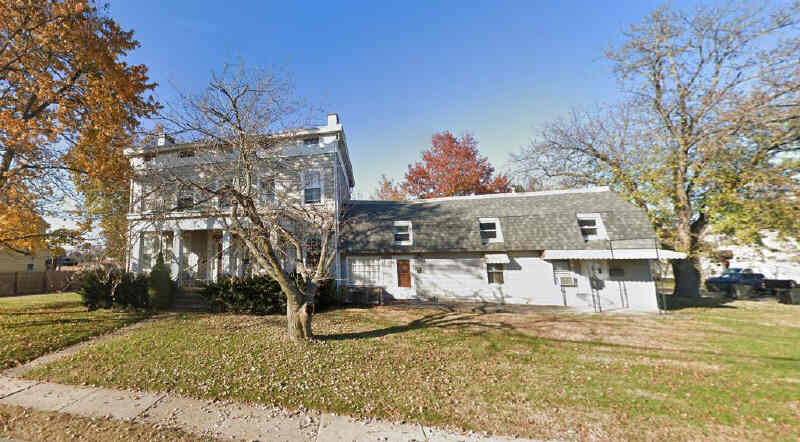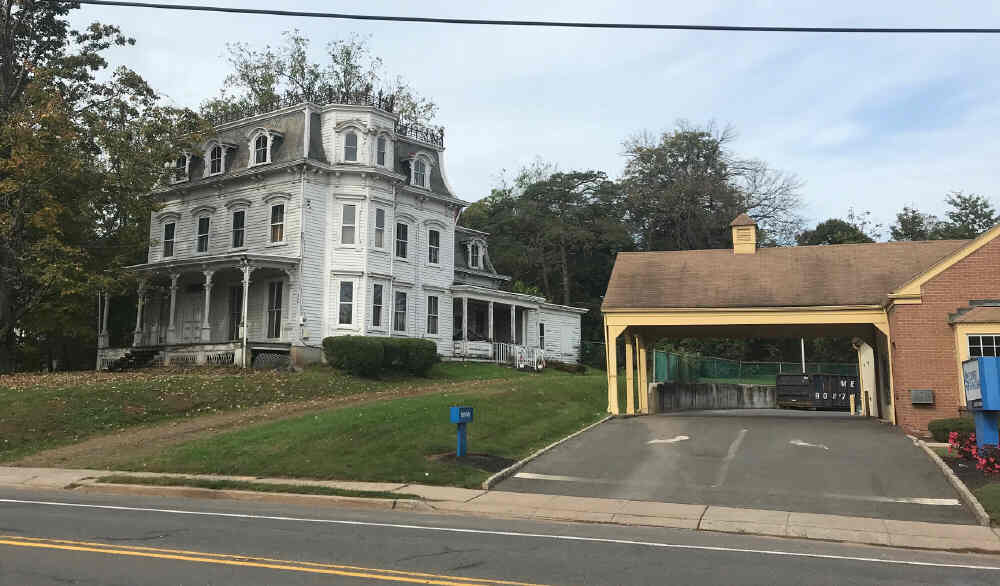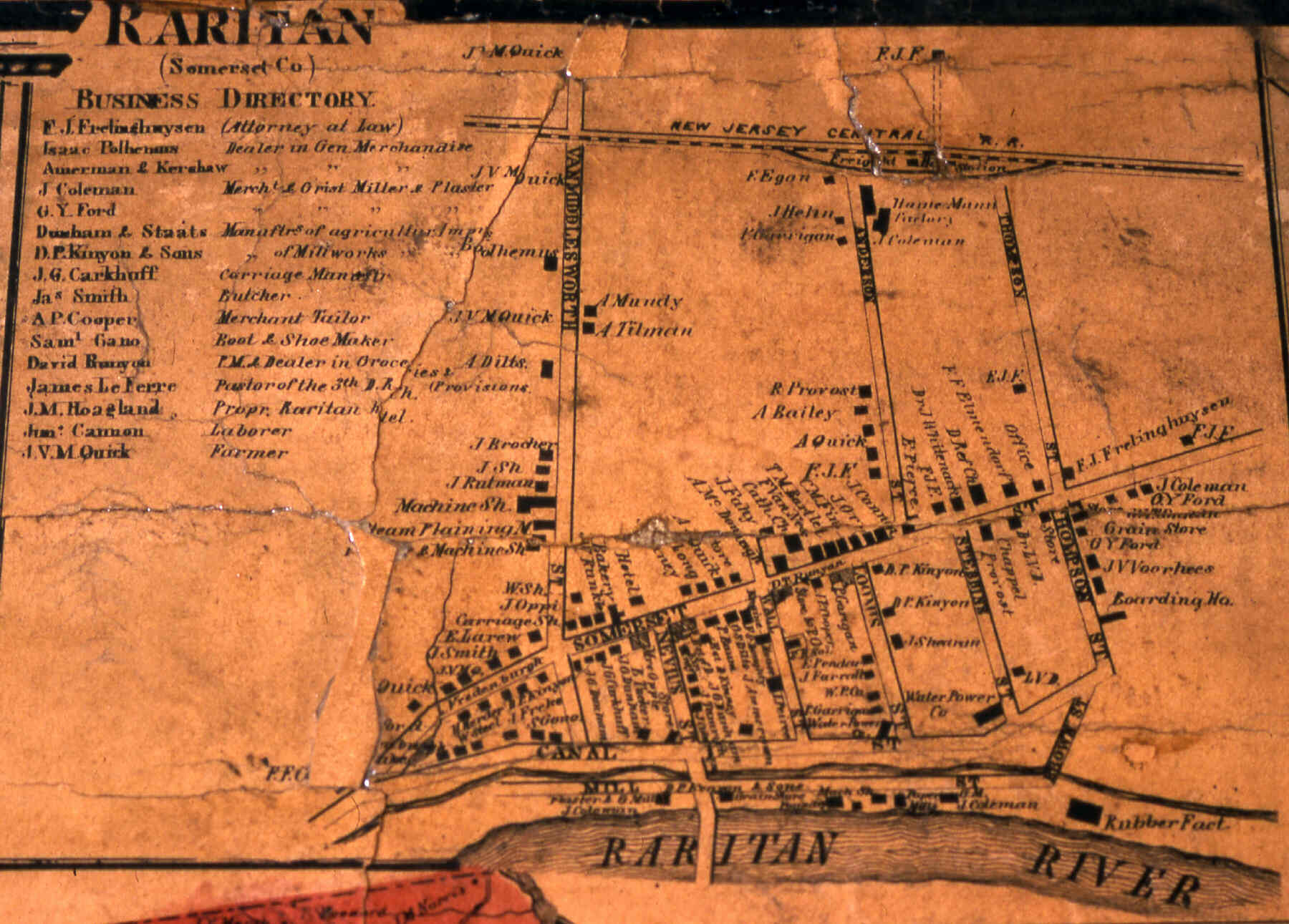
That year was the 100th anniversary of Raritan’s official recognition by the State of New Jersey.
Since last month’s article some have asked what was Raritan like way back in that first official year in 1868?
Fortunately, several sources exist. Here is what is known.
Click to view
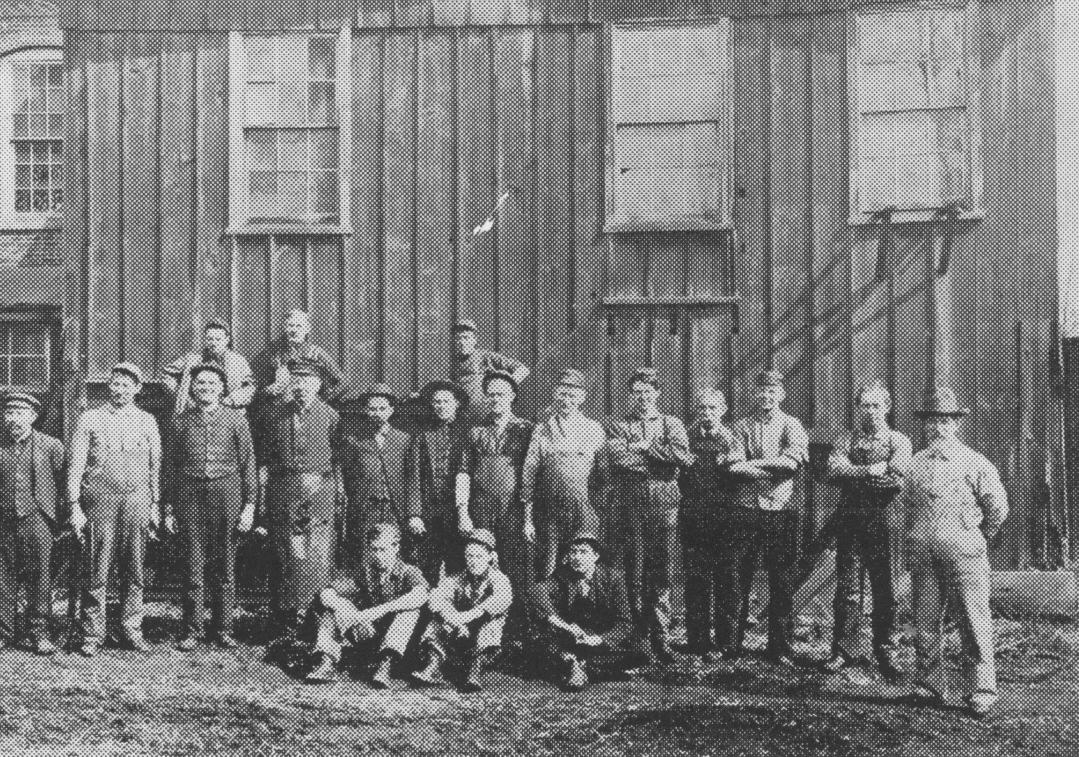
The population had increased from just a handful of people twenty-five years before to around one thousand people.
The town had grown for two reasons. Manufacturing industries had sprung up by the river/canal and the railroad line had come to town.

The limitation of the railroad was that one could only travel to where the train tracks went. But society built itself up around the railroad lines, so most everything came to be found along the train tracks.

The stage coach line was still popular in 1868. The part of the stage coach line that went south western from Raritan to Flemington/Philadelphia was still busy as the train tracks did not go in that direction. (The train line went west to Easton Pa.). The part of the stage coach line that went eastern from Raritan was still used for short trips, but was no longer as busy as the train line covered a good part of eastern New Jersey.
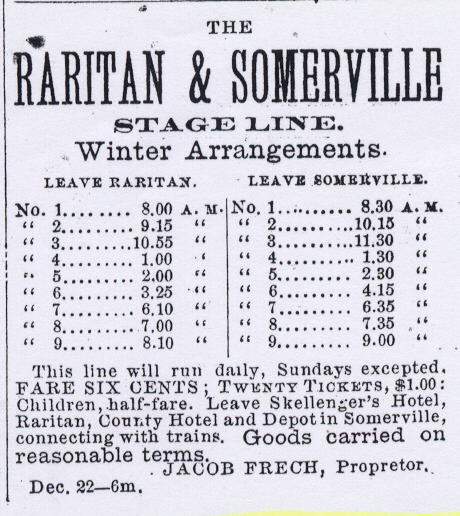
One thing that is not widely known about Raritan is that in 1868 it was a trading center for farmers from farms that were west and north of Raritan.
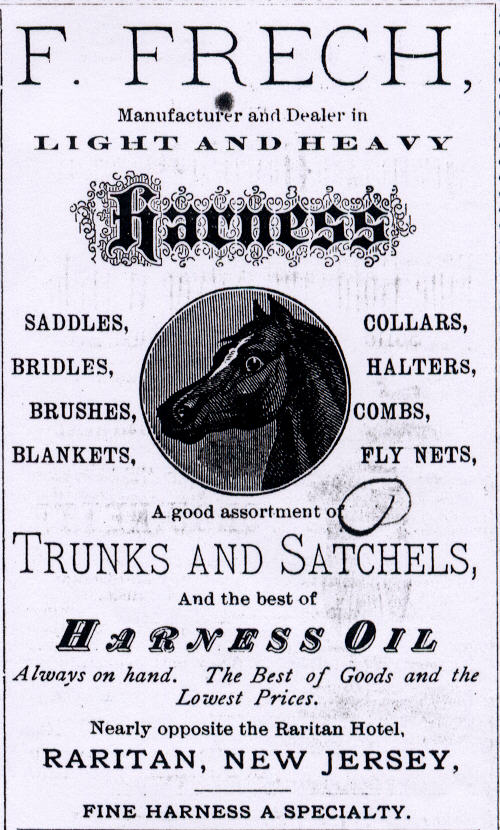
In 1868 most of the businesses and half the homes were found on Somerset Street.
First Avenue (then called Van Middlesworth St.), Anderson Street and Thompson Street were the only streets north of Somerset Street in 1868. Each had a few scattered homes. On First Avenue up toward the railroad tracks was a farm owned by the Quick Family. It was a small farm by the standards of any era. Milk from cows was the main product produced.
Also, around this area off First Avenue (by where Second and Third Street are today) was an open area known as the Commons. Here many things happened. Boys played ball, picnics were held, and when the traveling circus came to town, they camped out there.
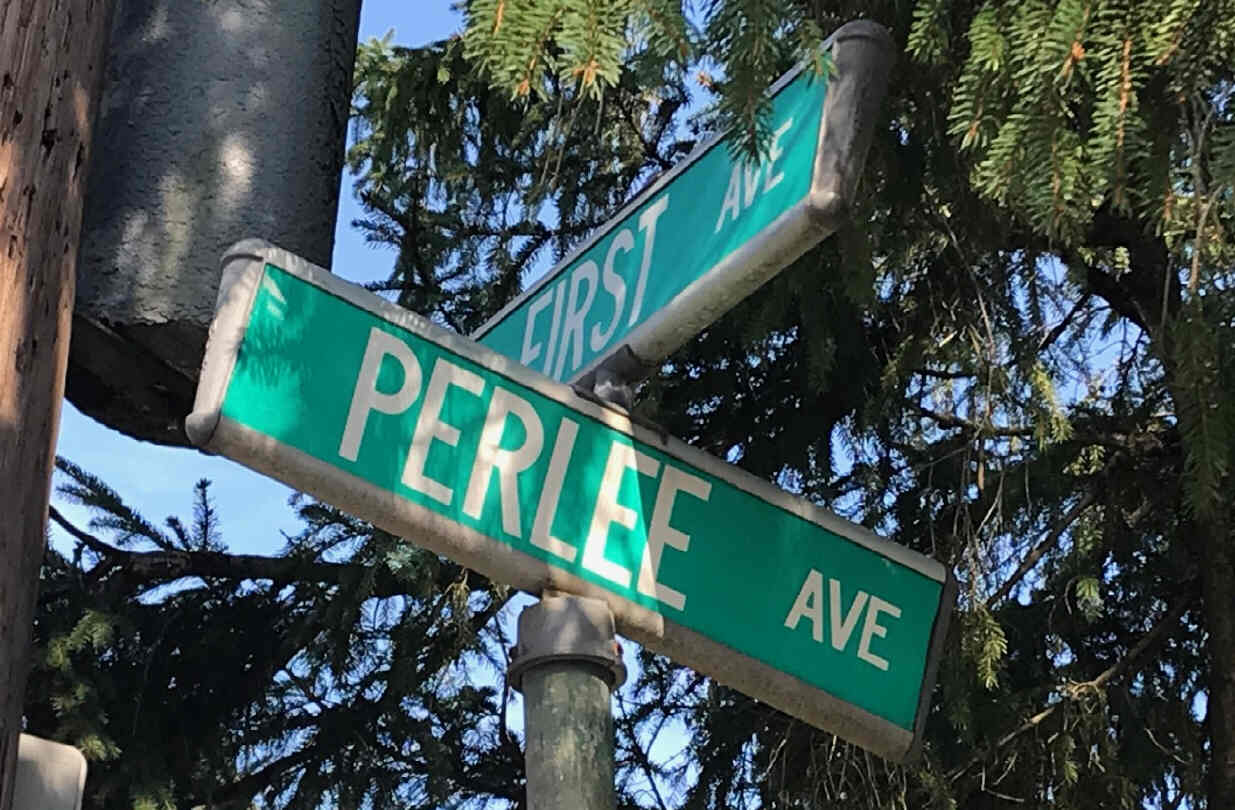
Today Perlee Avenue can be found there.
The roads that we know today that go south from Somerset Street - Lyman, Nevius, Wall, Doughty, Loomis, and Thompson were all there in the 1860s.
Each had several homes. Back then Doughty Street was called Steinbach, but all the other streets still maintain their original name.
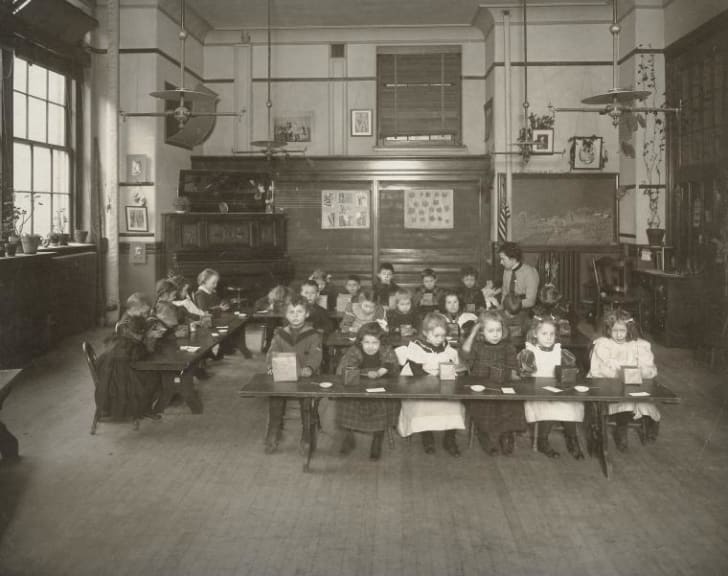
There was a bridge going over the Raritan River at Nevius Street, but it was a wooden bridge. That bridge would be replaced years later by the steel (now pedestrian only) bridge that is still standing.
The public school in the 1860s was a 20*30 foot building on Wall Street. There was also a small private school in a home on Doughty Street run by Miss Provest.
The Post Office was located on the south east corner of Somerset and Wall Street in a room of the home/business of the postmaster Cooper (who was also a tailor). No mail was delivered to the home. All mail had to be picked up at the post office.
(file photo)

The church was a big part of the life for the people of Raritan in the 1860s. Most everyone went to church on Sundays and many were involved with the church during the week.
There were two churches in Raritan. By far the largest congregation was the Third “Dutch” Reformed Church on Somerset Street as the people who had settled in Raritan then were of Dutch descent. The Third Reformed Church had a second building, a chapel, across the street that was used for Sunday School and other functions. Their main church “building” still stands today (as a Hindu Temple) although additions have been made to it.
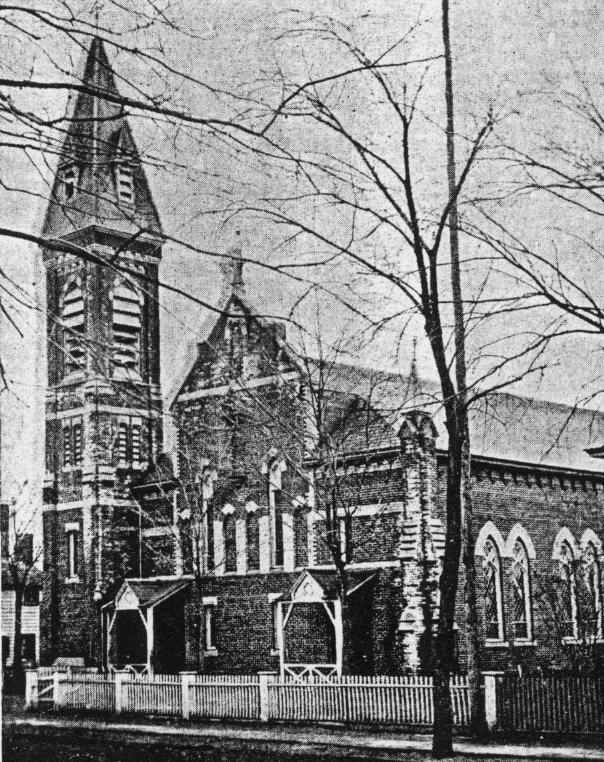
It was not nearly as popular. The church building is still standing, but that congregation moved to a larger church in Bridgewater thirty years ago. The church building today is a Shrine.
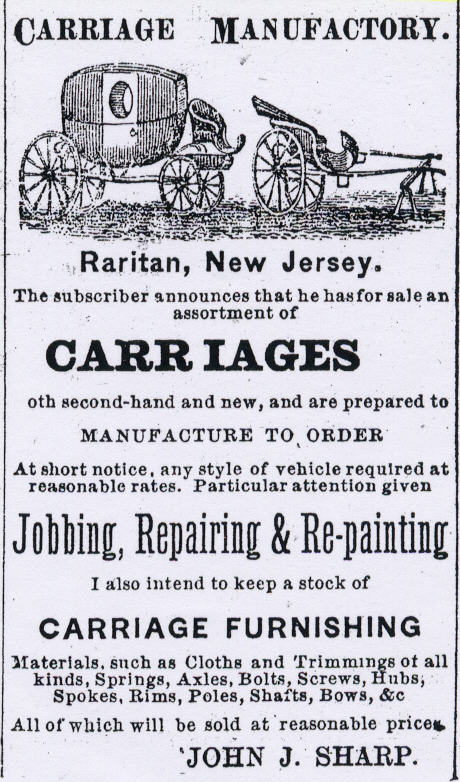
A Carriage Repair and Manufacturer was at the north-east corner of Somerset and First Avenue. (That location would be a transportation vehicle repair shop for over one hundred years as it later converted from fixing carriages/wagons to fixing automobiles.)
A surviving business directory lists two general stores, a couple of blacksmiths, and a butcher. But their exact locations are not certain.
East from the carriage repair shop on Somerset Street was the baker Benbrook.
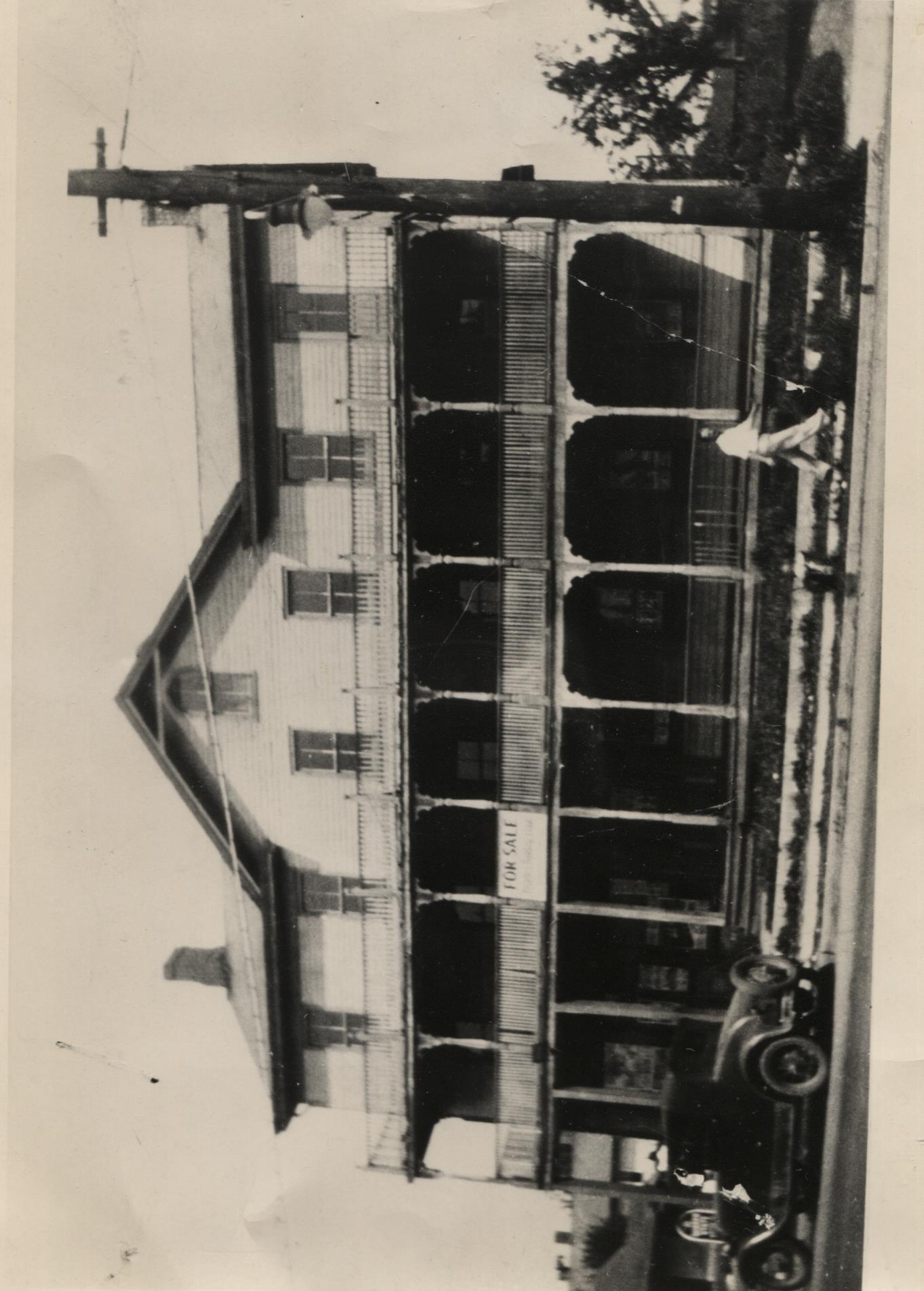
A shoemaker/ shoe repairer was located at the north-west corner of First Avenue and Canal Street.
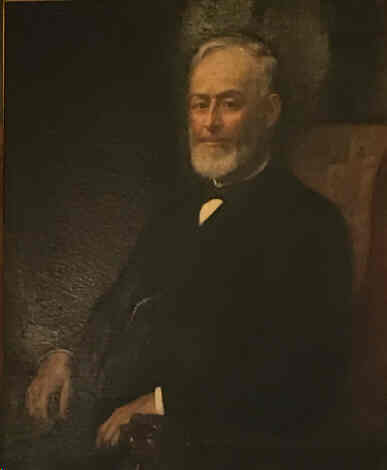
Frederick had a large home at the north-east corner of Somerset and Thompson Street.
(That home, a few years after the 1860s, would be confiscated/purchased by the railroad to make room for an expansion line. Thus, the family in the early 1870s built a mansion where the P.C. Richard is today. Ironically the expansion line was never built.)
hangs in the library
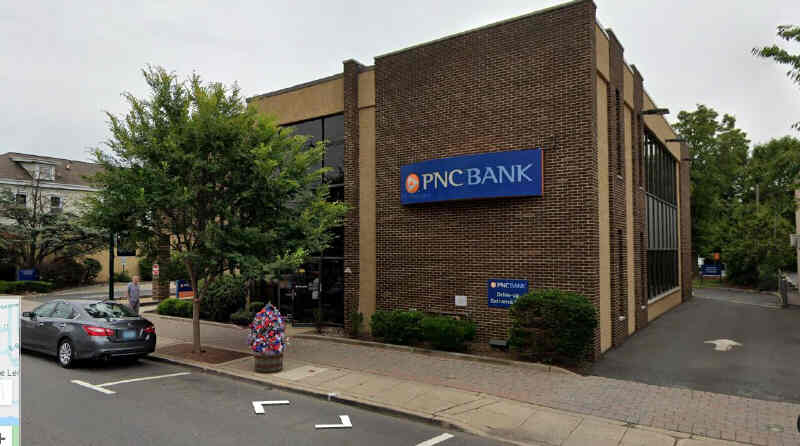
Amazingly there is one business in Raritan from the 1860s that has a descendant still in town today.
In 1869, the Raritan Savings Bank was formed. The bank would continue for over one hundred thirty years before being taken over 25 years ago by another bank. That location, after a few name changes, survives today as the Raritan Branch of the PNC Bank.
